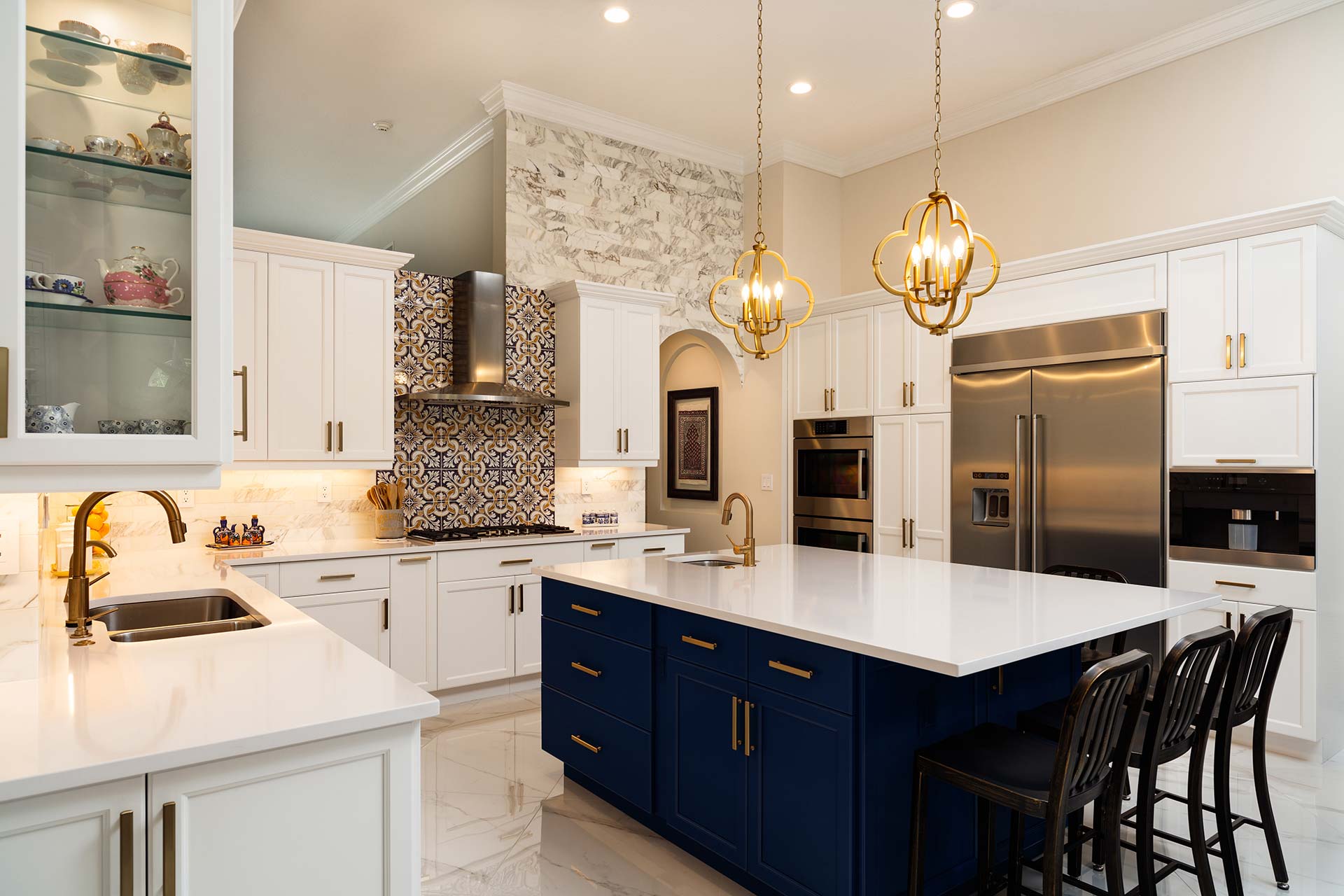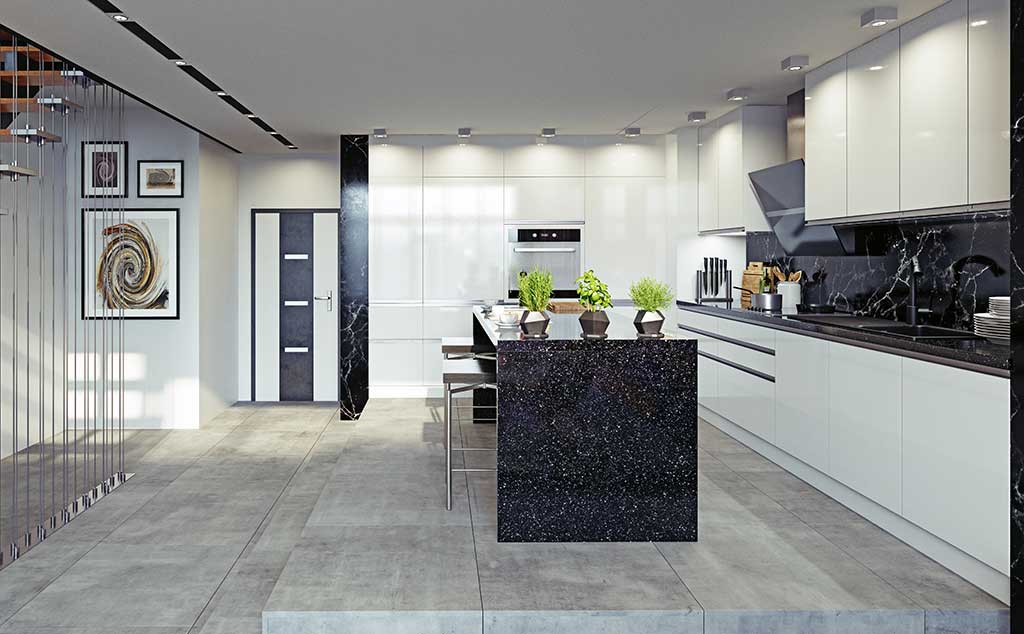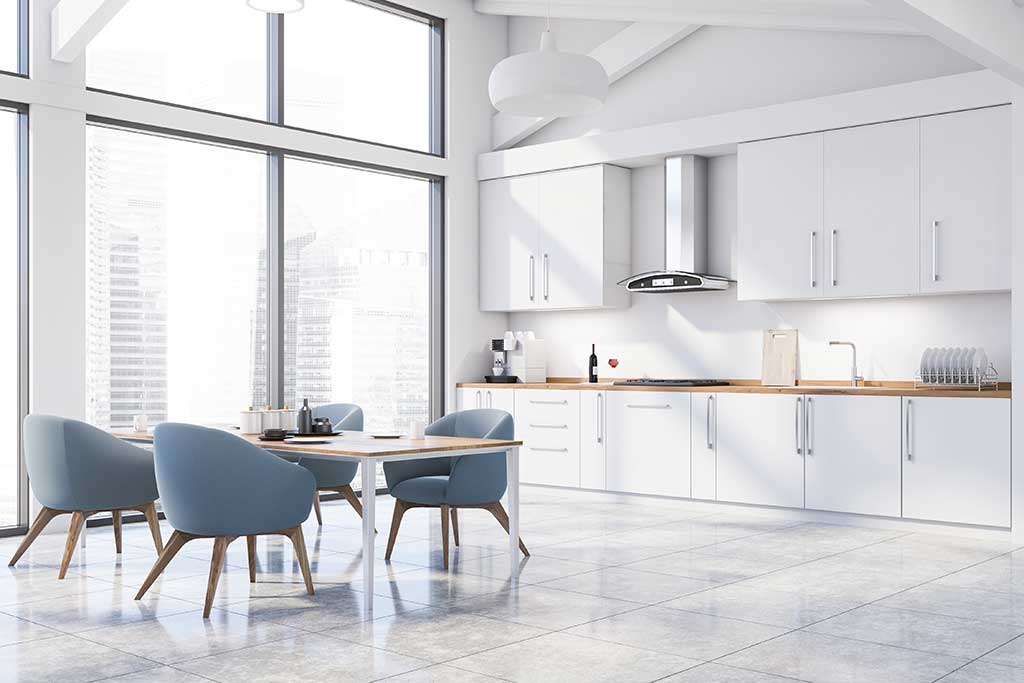
The kitchen seems to be a natural fit for tile flooring. Tiles are not only durable and resilient to heavy foot traffic and stains, but the tiles can be a critical part of the overall kitchen design. Kitchen floor tile ideas abound, so just one look at the many ways to use tile in your kitchen can have you feeling overwhelmed. Here’s a breakdown of the best tile for kitchen floor coverage and how to choose kitchen floor tiles for your space.

Important Tips on How to Choose Kitchen Floor Tiles
From porcelain kitchen floor tiles to ceramic and stone, you have a wealth of options to consider. The costs of a tile floor can range from $2 to $100 per square foot, and numerous textures and styles are available. Here is a closer look at tips for choosing the best tile for kitchen floor.
Consider Material Options
You essentially have three options for kitchen floor tile ideas: Stone, ceramic, and porcelain kitchen floor tiles.
Stone Kitchen Floor Tiles

Stone tiles are obviously made of natural stone like travertine and granite and can offer a few advantages. For one, stone can have a natural cut so you get texture and traction. While natural stone can be more costly, the material is exceptionally durable. The only downside other than cost is ongoing sealing requirements to protect the materials.
Ceramic Kitchen Floor Tiles

Ceramic tile makes its way into many kitchens. Made from different types of clay, ceramic tile is resilient to stains and easy to cut to size for installation. The cost and plethora of color and style options make ceramic tile one of the most preferred types. However, ceramic is not always as resilient as porcelain or natural stone, as it is softer and can break easier with direct impact.
Porcelain Kitchen Floor Tiles

Porcelain tiles are made from clay and sand, heat and pressure-treated, and less porous compared to ceramic. For these reasons, porcelain is often thought to be the best tile for kitchen floor coverings. While the finish can be polished and glossy, some porcelain tiles also have a rough texture treatment. Porcelain tile can take longer to install, which means installation can be a bit more costly.
Think About Tile Durability
Tiles can have different ratings depending on their levels of durability. For kitchens, Class 3 and Class 4 tiles tend to offer the most resilience. Either of these ratings means the tile can stand up to high levels of foot traffic.
Be Mindful of Water Resistance
Some tiles are more porous than others. You definitely don’t want a tile in your kitchen that absorbs and holds water, as this can also mean the tile hangs onto bacteria. Some natural stones can be more porous, so be sure to weigh your options carefully.
Textured or Smooth?
Textured tiles are nice underfoot because they help thwart the risks of falling if the floor gets wet. While a nice clean and shiny surface may be attractive, additional glazing on something like porcelain can prove to be problematic in your kitchen.
Need More Advice on How to Choose Kitchen Floor Tiles for Your Space?
If you are having trouble wading through the options and figuring out how to choose kitchen floor tiles, be sure to entrust a remodeling contractor for advice. Reach out to us at Oasis Builders if you need expert advice and help with your kitchen remodel.
